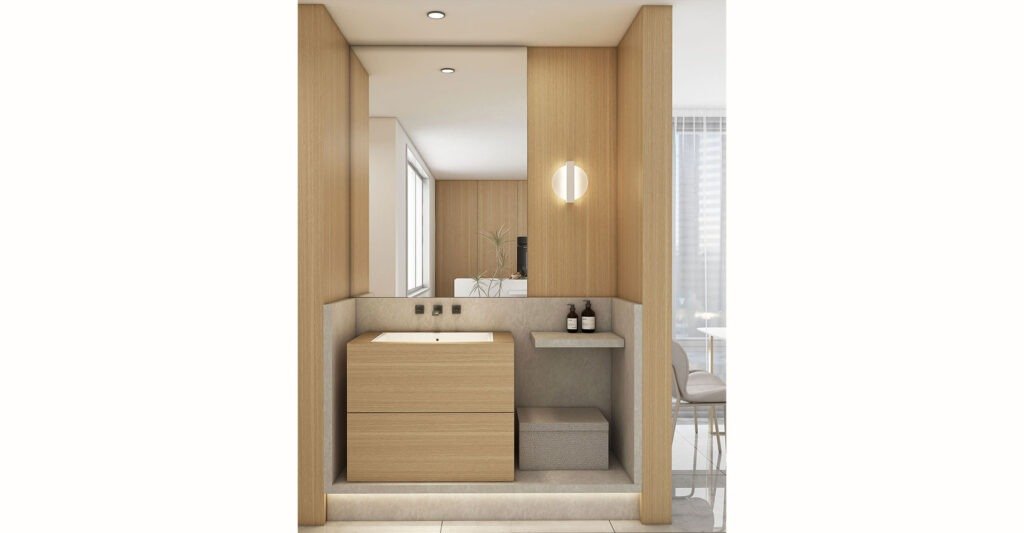Particle board is an affordable and versatile option for a wide range of home projects, from shelving to furniture and cabinetry. However, working with particle board requires special care to avoid issues like chipping, warping, or splitting. Here are some essential tips to help you make the most out of particle board without compromising on quality or durability.
1. Use the Right Tools for Cutting
Particle board can be prone to chipping along the edges when cut. Using the right tools and techniques will help you achieve cleaner, more professional cuts.
- Choose a Fine-Tooth Blade: Use a circular saw or table saw with a fine-tooth blade, ideally a carbide-tipped blade designed for cutting particle board. This minimizes chipping and provides smoother edges.
- Score the Cut Line: Before making the full cut, score the line with a utility knife to reduce splintering along the edges.
- Use Masking Tape: Applying masking tape along the cut line can help prevent chips. Place the tape over the area where you’ll be cutting, and remove it once you’re finished.
2. Pre-Drill Holes to Avoid Splitting
Particle board can split easily if screws are inserted directly without pre-drilling, especially near the edges.
- Pre-Drill Pilot Holes: Always pre-drill pilot holes that are slightly smaller than the screws you’re using. This prevents cracking and ensures that screws go in smoothly.
- Use Coarse-Threaded Screws: Choose screws with coarse threads, as they provide better grip in particle board. Fine-threaded screws can strip easily and won’t hold as securely.
- Avoid Over-Tightening: Tightening screws too much can cause the material to crumble or crack. Tighten just enough to secure the screw without compromising the board’s integrity.
3. Seal Edges to Prevent Moisture Damage
Particle board is highly susceptible to moisture, which can cause it to swell and deteriorate over time. Sealing the edges protects against moisture and helps maintain the board’s durability.
- Apply Edge Banding: Edge banding is a simple way to cover the raw edges of particle board, adding both protection and a polished appearance.
- Use Wood Sealer or PVA Glue: For hidden or less visible edges, apply a layer of wood sealer or even PVA glue to create a moisture barrier.
- Consider Melamine Edge Strips: Melamine edge strips are easy to apply with an iron, providing an extra layer of protection while matching the surface finish of the board.
4. Reinforce Joints and Corners
Particle board can be weaker than other wood materials, especially in high-stress areas like joints and corners.
- Add Corner Braces: For furniture or shelving, use metal corner braces or angle brackets to reinforce corners and joints, increasing structural stability.
- Use Wood Glue Along with Screws: Apply a high-quality wood glue along with screws to secure joints. The glue adds extra hold, distributing pressure more evenly across the joint.
- Avoid Heavy Loads: Be mindful of weight limitations when using particle board. Avoid overloading shelves or furniture to prevent sagging or breakage over time.
5. Finish with a Protective Coating
A good finish can improve particle board’s resistance to wear, moisture, and scratches.
- Apply a Clear Sealant: A clear polyurethane or acrylic sealant creates a protective layer on particle board surfaces, especially if they’ll be exposed to moisture or daily use.
- Use Primer and Paint for a Custom Look: If you’re painting the board, start with a primer designed for particle board to ensure the paint adheres well. Follow with a durable paint finish, such as semi-gloss or gloss, for added durability.
- Consider Laminate Sheets for a High-End Look: Applying laminate sheets can enhance both the durability and aesthetic of particle board, making it more scratch- and moisture-resistant.
6. Prevent Sagging in Shelves
Particle board tends to sag under heavy weight, especially when used for shelving.
- Choose Thicker Boards for Shelves: For shelving projects, use thicker particle board (at least 3/4-inch) to reduce the risk of sagging.
- Add Support Rails: Installing support rails under the shelves or using shelf brackets can help distribute the weight more evenly.
- Limit Shelf Span: Shorter shelf spans (less than 30 inches) help reduce bending and sagging over time. For wider spans, consider additional vertical supports.

Why Tacon Wood Industry’s Particle Board is a Great Choice
At Tacon Wood Industry, we provide quality particle board options suitable for various applications, from furniture to storage solutions. Our products are designed for durability and affordability, making them a smart choice for your next project. Reach out to us at taconsales86@gmail.com to discuss your needs and explore our selection of particle board products.




